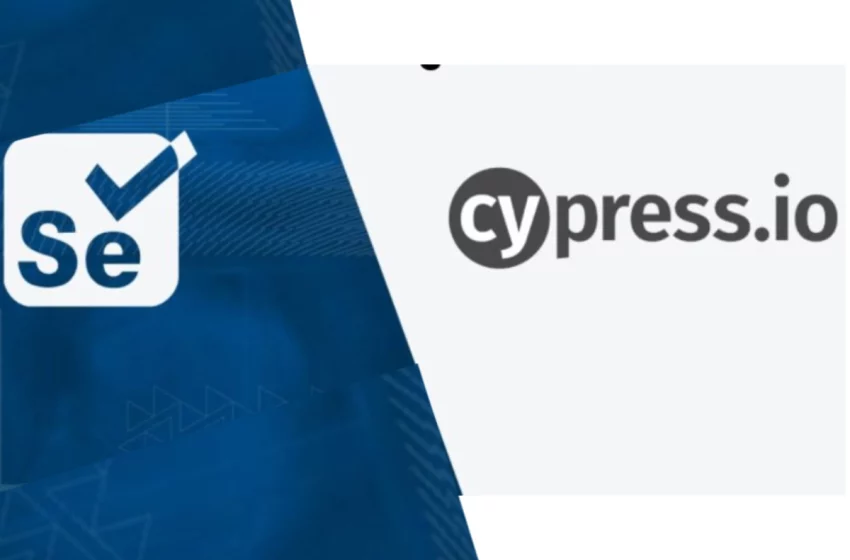
Cypress Vs Selenium: Which Is Better For Your Testing Workflow
Cypress and Selenium are two powerful test automation tools. Both free frameworks allow you to run tests and speed up the testing process. However, both provide maximum benefit in commercial versions.
Solutions are often referred to side by side as competitors. Nevertheless, they have many differences. Consider the needs of your project when choosing an automation tool. Let’s take a closer look at these frameworks.
Table of Contents
What Cypress & Selenium are
Cypress is an end-to-end test automation framework applied to create web automation scripts. Cypress works at the network layer; it interprets and modifies web traffic. This way, the tool edits the entire browser and updates codes that may affect browser automation.
Selenium is one of the most powerful functional testing tools for web applications. It provides the most accurate simulation of end-user interactions when using a browser. Testers need to develop a use case for the application under test.
Selenium is a set of tools. Among the most popular Selenium projects are:
- Selenium Grid. Scale testing by distributing tests across multiple machines and doing parallel testing.
- Selenium WebDriver. It allows you to create automated suites for regression testing in the browser and scale and distribute these scripts across many environments.
- Selenium IDE. It is used to create bug reproduction scripts.
Cypress & Selenium comparison
Installation
Often, a project’s automation begins with an employee’s initiative. However, the time-consuming installation and setup of tools can dampen enthusiasm. In addition, not every project can devote several weeks to trying out a tool that may not suit it in the future. This is where Cypress comes in handy because it requires no prior configuration. You install the .exe file, then automatically configure all drivers and dependencies. You can automate in minutes. A convenient and comfortable testing workflow is one of Cypress’s design philosophies. Try Zebrunner CyServer to see how simple it is and how it works.
Selenium requires language-binding libraries to be installed to use the preferred language. Also, you will need the WebDriver binaries for the browsers you want to check for automatically.
Parallel testing
Both tools allow you to run tests in parallel. However, the Selenium grid provides more convenient options. With Zebrunner Selenium Grid you can run up to 1000 parallel streams and achieve maximum coverage. The solution provides the ability to execute a massive stack of tests. You get access to unlimited power and can run as many tests as you need simultaneously. You need only to pay for the time you use the tool.
Programming languages
Cypress only supports JavaScript. This is both an advantage and a disadvantage of the framework. Selenium provides a wide range of languages: Java, C#, Python, Ruby, R, Dar, Objective-C, Haskell and PHP, and JavaScript.
Browsers & operating systems support
Cypress supports Chrome, Chromium, Edge, and Firefox. Compared to Cypress, Selenium provides better cross-browser support. You can verify your web app against Google Chrome, Firefox, Edge, Internet Explorer, and Safari.
Cypress supports Windows 7 and above, MacOS, and Linux. Selenium supports Windows, MacOS, Linux, and Solaris.
Documentation
The more detailed and clear the documentation is, the faster you will get the first automation results. The Selenium website provides enough documentation, but there are not as many examples as you might need. On the other hand, the Selenium project over the years (launched in 2004) has formed a huge expert community.
Professionals note that Cypress has exemplary API documentation with code examples and usage scenarios. The project website contains videos, practices, and available plugins. Moreover, the Cypress community hosts webinars, the materials of which are then published on the site.
Cypress benefits
Great tool for end-to-end testing. All the necessary functions are built into the solution; Cypress positions itself as a universal environment for test automation.
This is an ideal solution for those who work with JavaScript. Cypress provides high performance because it is based on JavaScript and runs inside the browser. Cypress is for you if you’re working with this programming language and your project revolves around a front end.
A set of features that make the tester’s work easier. Among these features:
- Time travelling. After testing, hover over each command in the Test Runner panel and see what happened at each step.
- Debugging. In Cypress, you can debug tests using the Developer Tools.
- Spies, stubs, and clocks. You can control the behavior of functions and server responses with Cypress spy methods and functionality.
- Consistent results. Cypress runs tests directly in the browser. This facilitates fast, consistent, and reliable testing without flaky tests.
- Documentation. Cypress is designed so that engineers without automation experience can quickly get the first results with the solution.
Selenium benefits
Flexible tool for automation. The solution provides everything you need to create a test automation pipeline. With Selenium, you can use the components of the tool in such a way as to create a convenient automation process.
The solution is suitable for performing various types of testing. You can do front-end, cross-browser and cross-platform testing, mobile testing (using Appium), compatibility, performance, integration, system, regression, and end-to-end testing.
The best option for parallel testing. If you have a large number of tests, this doesn’t mean a release delay. Run them in parallel and get results 10x or 100x times faster.
Community support. Selenium has a huge community of professionals. You can ask the community members if you have difficulty setting up the tool. They will also tell you how to use the solution in non-standard cases.


